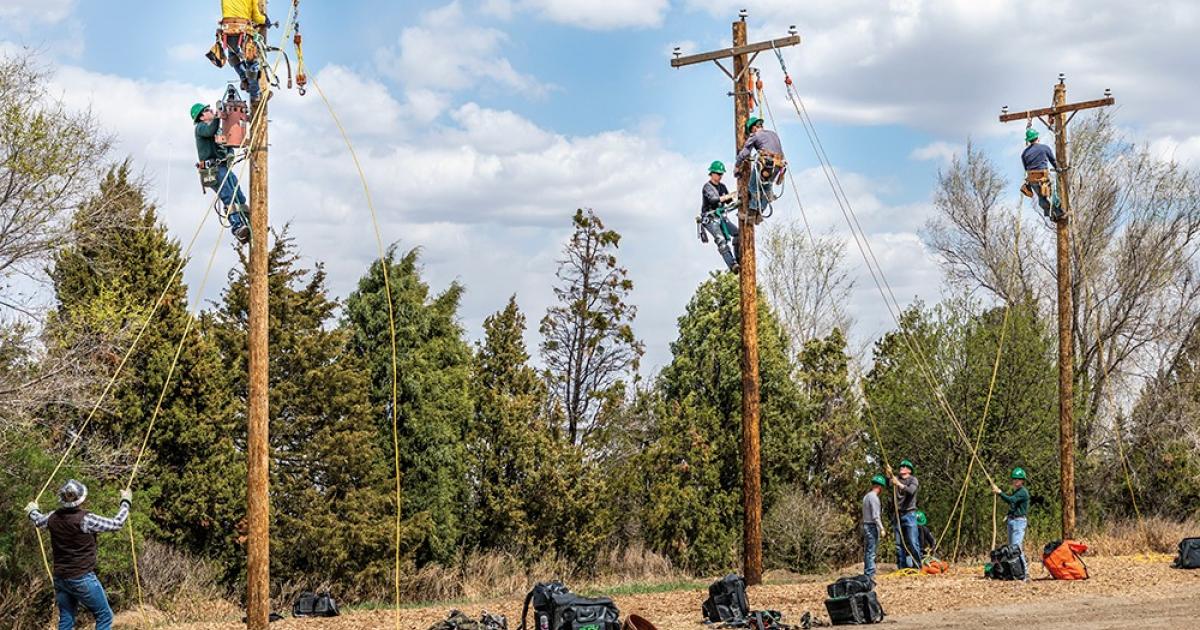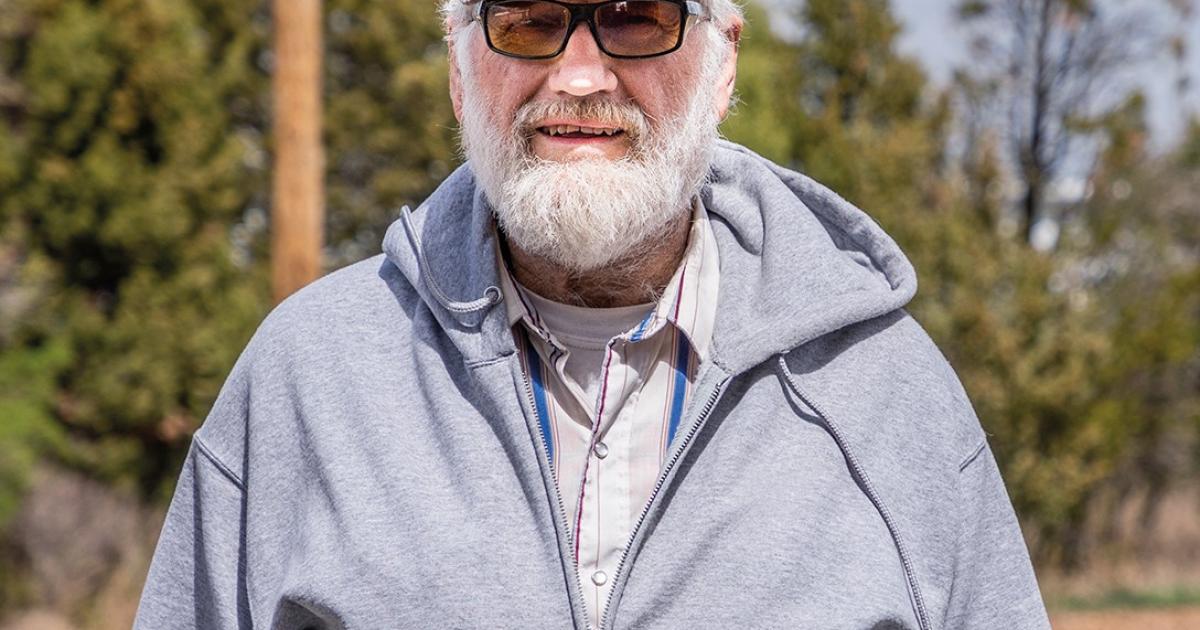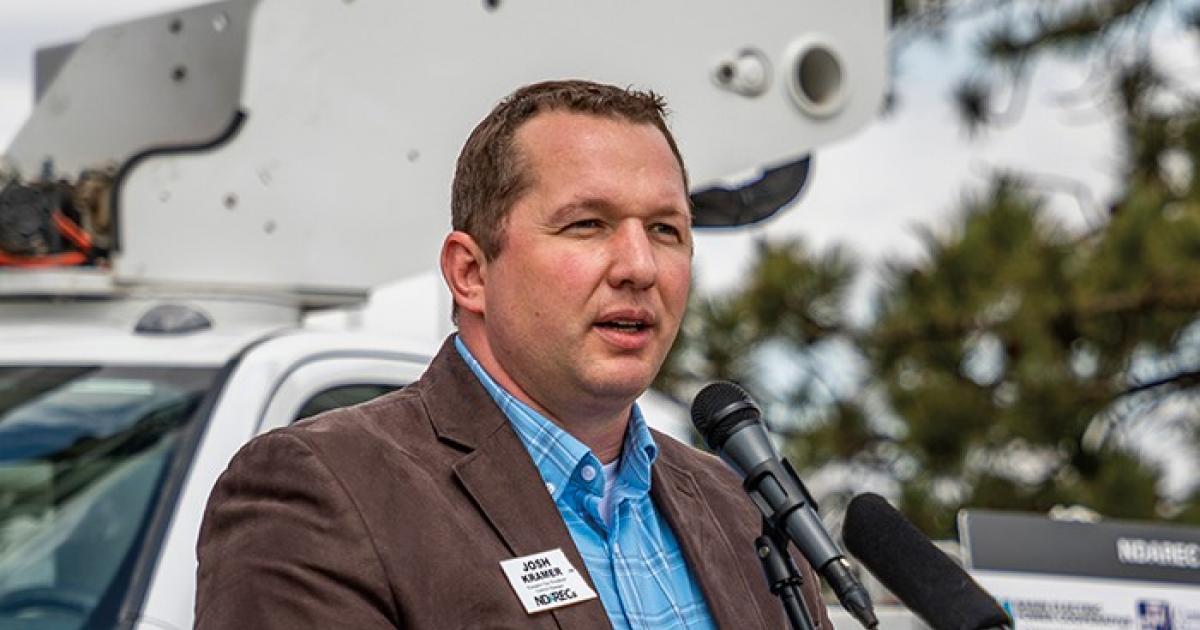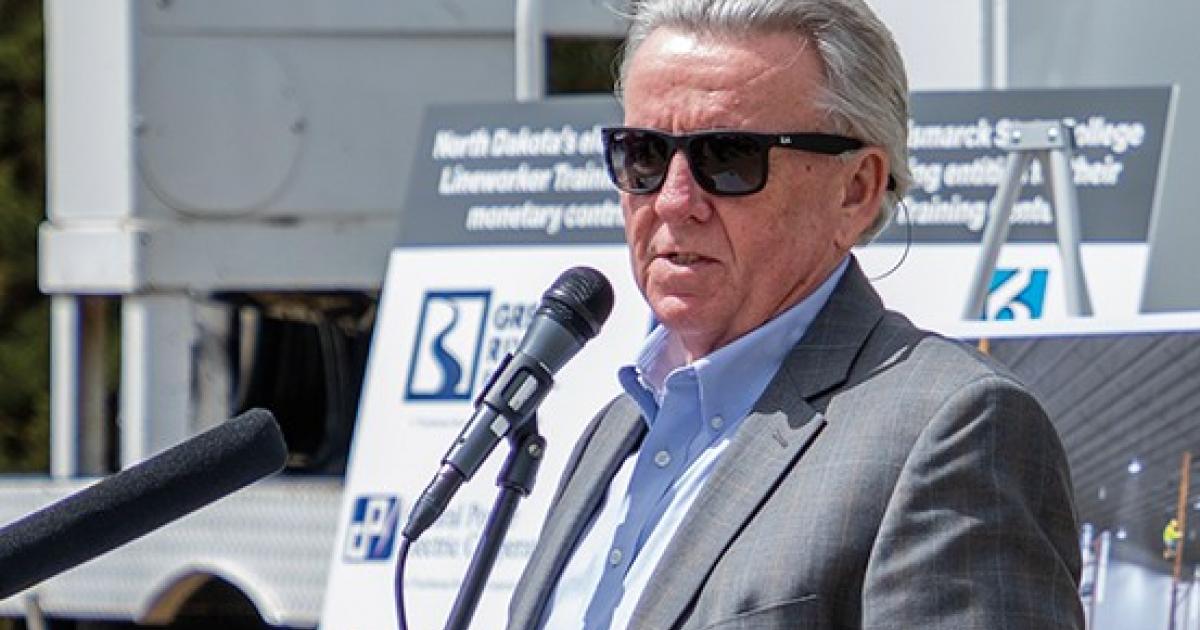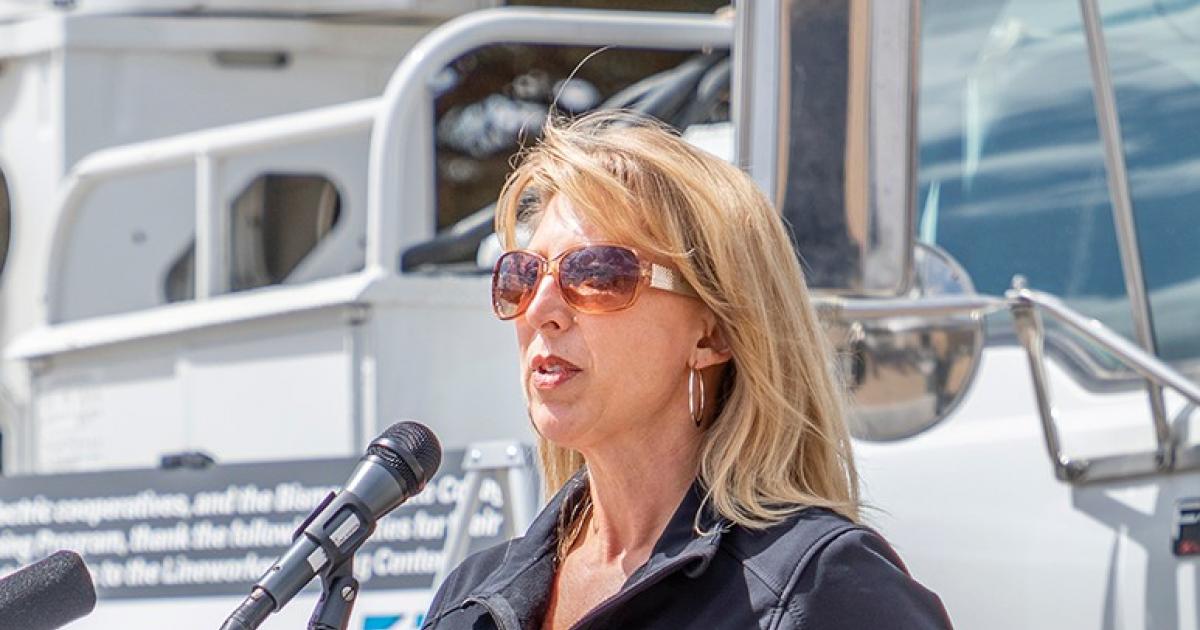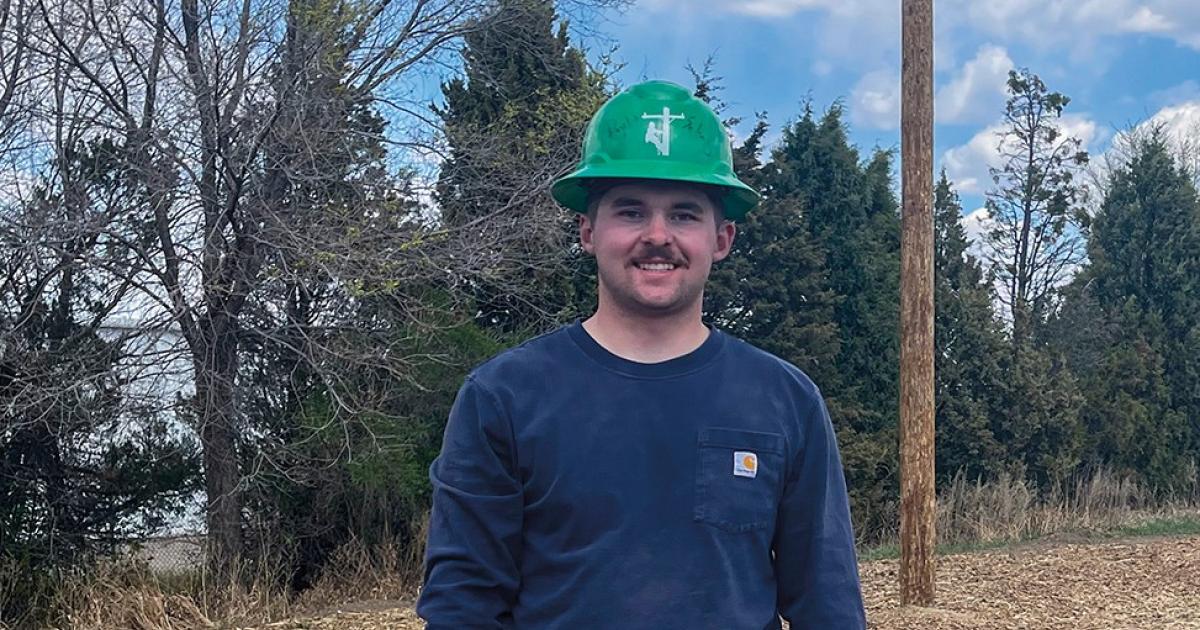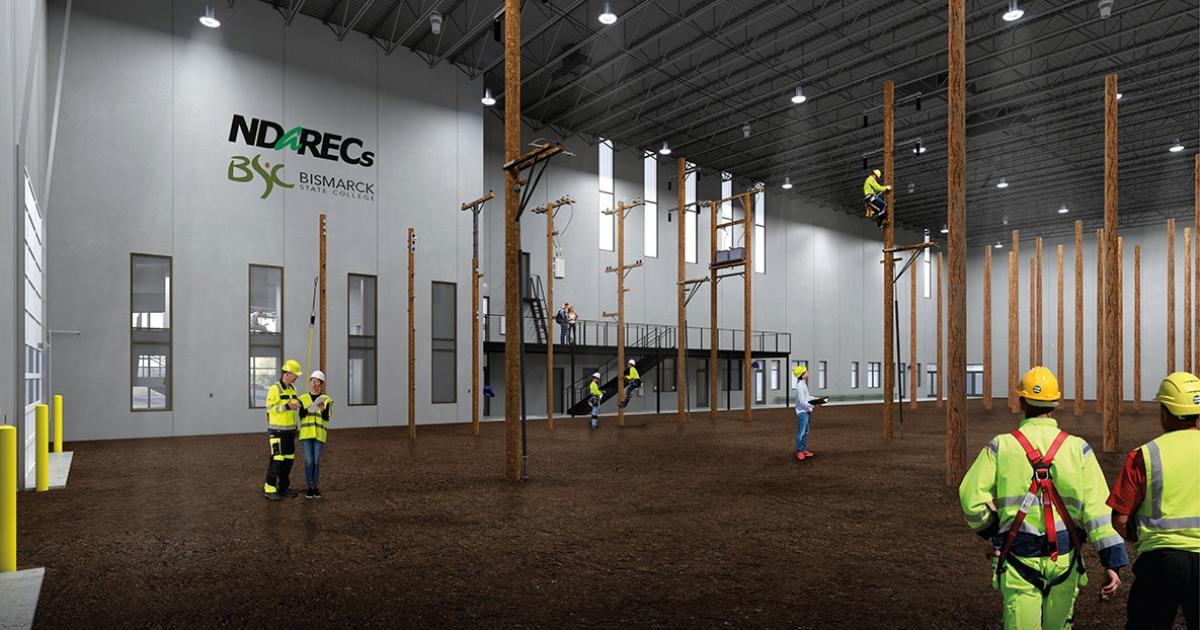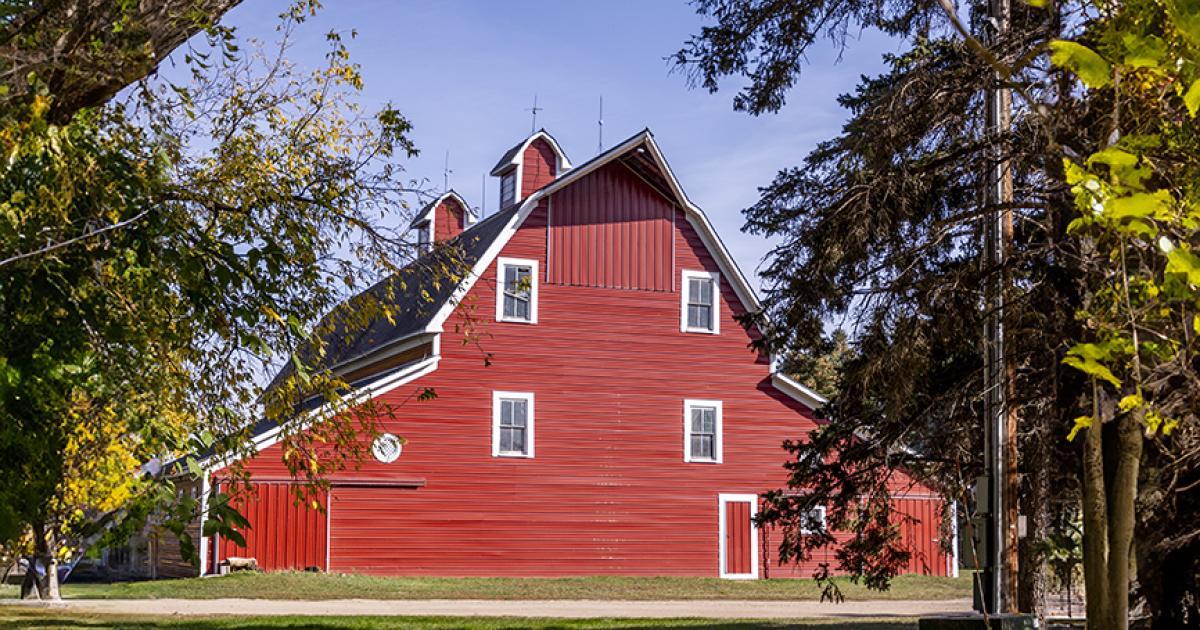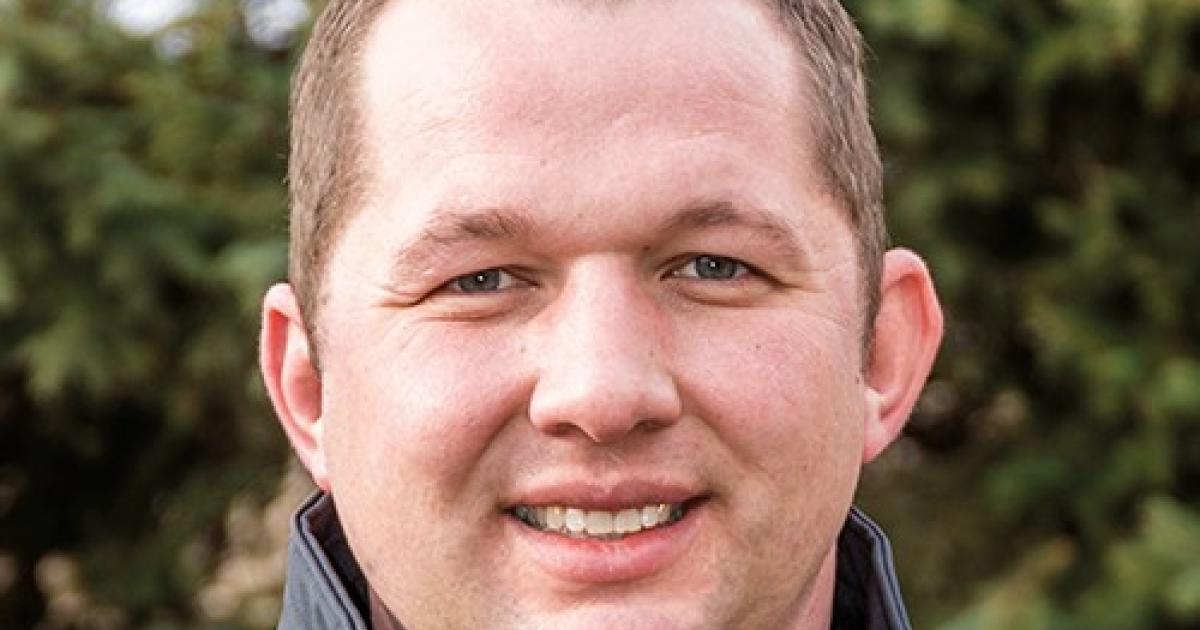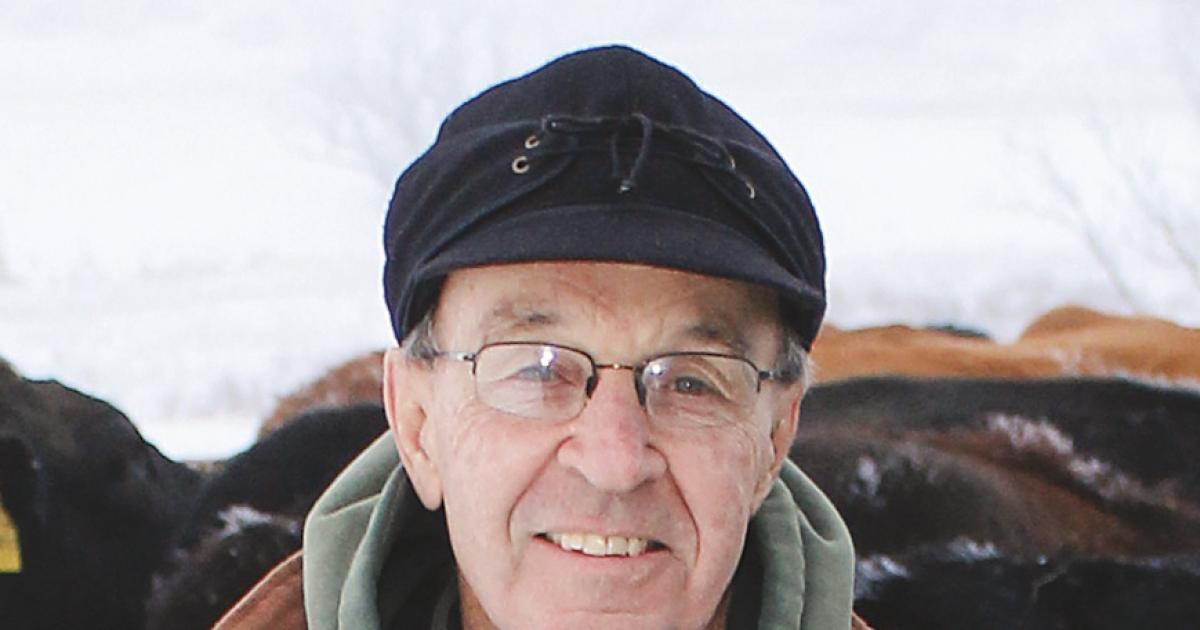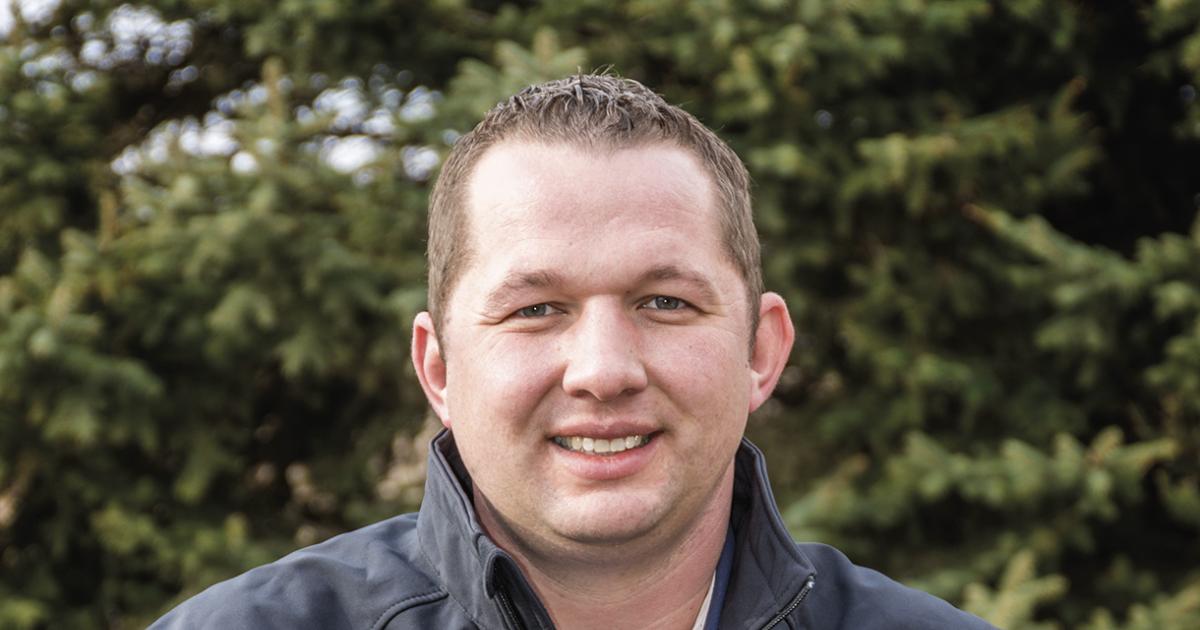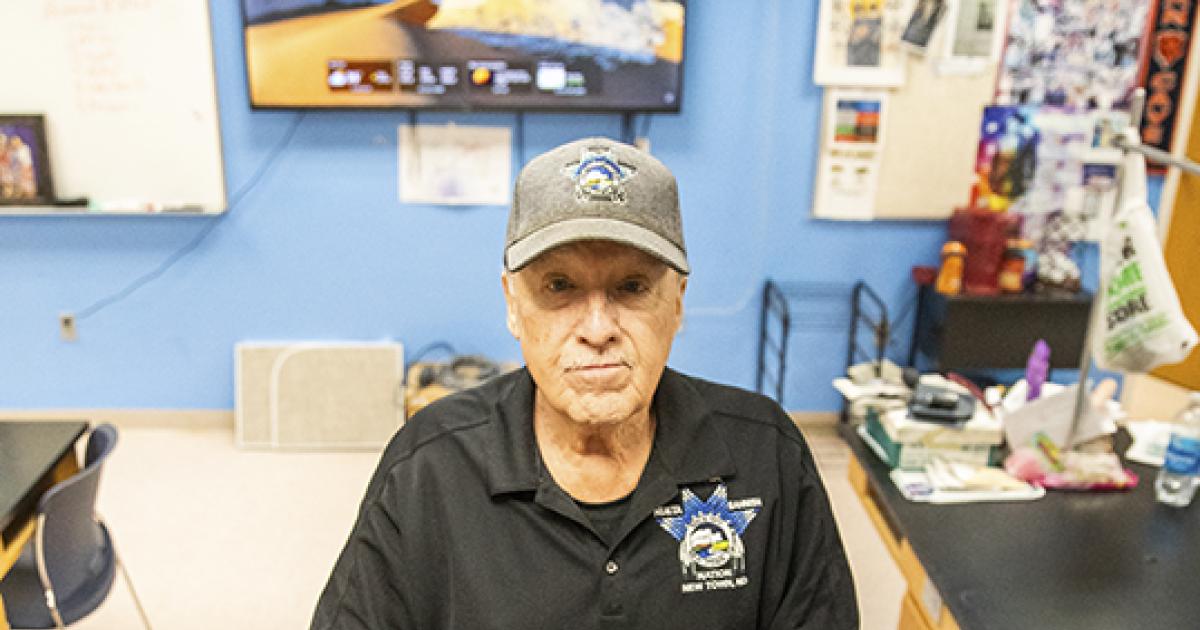New Lineworker Training Center sets course for next 50 years of public-private partnership
“Come on in. We’ve got plenty of dinner.”
Terrance Kraft doesn’t know how many poles he climbed in his 37-year career as a lineworker for Mor-Gran-Sou Electric Cooperative in Flasher. It would be equally difficult to remember the number of co-op members who invited him into their homes to share a meal or recall the names of the farmers who pulled the stuck line crew out of the ditch – at any hour, without asking anything in return.
Bismarck State College (BSC) lineworker students provide demonstrations at a May 6 event celebrating a 50-year partnership between BSC and the North Dakota Association of Rural Electric Cooperatives.
“I loved the job, loved who I worked with and being outside,” Kraft says. “I didn’t like the weather all the time, but for the most part, I liked it.”
It was a career he loved, made possible by an education he received from a school just 40 miles northeast of home.
Kraft was one of eight students in the first class of the Bismarck State College (BSC) lineworker program in 1970. Today, the 9-month program accepts 60 students each year and maintains a waiting list of 15 to 20 student hopefuls. More than 1,700 students have completed the program since its inception.
The foundation of the program’s success is a public-private partnership between BSC and the North Dakota Association of Rural Electric Cooperatives (NDAREC) that has endured for 50 years.
“Years ago, there was a need, a thought, a dream. The North Dakota rural electric cooperatives wanted a lineworker school, located somewhere in North Dakota, to give knowledge of (the electric industry) and develop the skills needed to build and maintain the cooperative system safely,” says Robert “Bob” Grant, president of NDAREC. “There must have been a lot of excitement in the room when Bismarck State College expressed that same vision.”
At a May 6 celebration of this five-decade-long partnership, NDAREC and BSC renewed their commitment to training lineworkers across the region and unveiled plans for a new, 26,294-square-foot, four-seasons Lineworker Training Center.
“Fifty years ago, North Dakota’s electric cooperatives answered the call to meet the needs of a growing electric industry by partnering with BSC to develop a premier lineworker training program,” says Josh Kramer, NDAREC executive vice president and general manager. “Now is the time to once again invest in the future of this critical trade.”
“With the facility, BSC is looking forward to expanding opportunity not only for our students, but also to advance industry training for those that are already in the field,” says Dr. Doug Jensen, BSC president. "Lineworkers keep homes powered and the lights on in our community. They are essential workers. It’s important that we invest in training this crucial workforce, and when industry partners such as NDAREC come alongside BSC like this, we can provide the highest quality hands-on, experiential, workforce training.”
LINEWORKER TRAINING CENTER
The BSC lineworker program – the only one of its kind in North Dakota – trains students at a specialized facility leased to BSC on NDAREC’s grounds in northwest Mandan. Lineworker students receive intense, hands-on instruction in all facets of powerline construction, equipment operation and maintenance. Study includes classroom instruction, courses to prepare students for North Dakota’s commercial driver’s license (CDL) exam, and indoor and outdoor lab work.
The outdoor training component prepares students for real-world scenarios, as lineworkers perform their jobs in all weather conditions.
Some of the moments Kraft remembers most were restoring power during North Dakota’s dangerous ice storms.
“You’d have miles of line down. You’d work all day to try to get it back up and at the end of the day, you didn’t have all the people on power,” he says. “You had to go home, go to bed, and that bothered me, because the people were still without power. You get up and go back at it the next day and try to get it restored.”
BSC lineworker students are not allowed to climb outside if the temperature drops below zero or wind speed is over 35 mph. On average, students lose 15 days each year of outdoor instruction due to weather.
The new Lineworker Training Center, which is slated to be completed late summer 2022, will include a 17,719-square-foot indoor training arena, essentially allowing outdoor training to be completed indoors, when necessary for the conditions. Instructors will also be able to observe and teach at eye level, providing corrections when a student is working at the top of a utility pole, for example.
“The indoor arena is going to be nearly as versatile as the outdoor training grounds,” says Christina Roemmich, NDAREC safety director and member of the BSC Lineworker Advisory Board. “We are going to be able to perform most of the tasks that we can do in the field.”
In addition, the new Lineworker Training Center will include two classrooms, upgraded technology to support remote learning and conferencing, a CDL simulator, adequate storage for students’ training gear and personal protective equipment, conference space and offices for the instructors.
BUILDING FOR THE FUTURE
To build this facility for the future of the electric utility workforce, NDAREC secured a $4 million grant from the U.S. Department of Commerce’s Economic Development Administration (EDA), which was matched by $1 million in local investment from North Dakota’s electric cooperatives.
“Projects of this magnitude don’t just happen on their own. … Teamwork led to the fruitful result of this public-private partnership,” Kramer says. Support from BSC, North Dakota’s electric cooperatives, the Lewis and Clark Regional Council, JLG Architects, EDA and North Dakota’s congressional delegation were especially crucial in the process.
Recognizing the importance of a skilled cooperative workforce – lineworkers constitute about 70% of the electric cooperative workforce in North Dakota – electric cooperative made significant financial contributions to develop the new facility. Funds were provided by Great River Energy, Mountrail-Williams Electric Cooperative, Basin Electric Power Cooperative, Central Power Electric Power Cooperative, Lower Yellowstone Rural Electric Cooperative, Minnkota Power Cooperative, CoBank, National Rural Utilities Cooperative Finance Corporation (CFC), Rural Electric Supply Cooperative (RESCO), Border States Electric and the Rural Development Finance Corporation.
‘YOU’RE ALL LINEMEN’
“Ever since I’ve graduated, there’s been an interest in the (BSC lineworker) school,” Kraft says, as we visit in the school’s shop over cupcakes and coffee at the May 6 celebration. “I can’t believe it’s been 50 years.”
The current lineworker students have already helped put the chairs away and clean up after the ceremony. They’ve wrapped up the live demonstrations of the work they’ve learned to do over the past nine months. I introduce myself to the last student in sight, Dayton Seborg, who is packing up his gear. His well-groomed mustache, dusty belt buckle and Carhartt shirt are giveaways of this Hazen High School graduate’s Wyoming roots. I can’t help but see the similarities between Seborg and Kraft.
“I like to work hard and be outdoors a lot,” Seborg says of his interest in the lineworker profession. “I figured linework was my style, meaning hard work and long hours. It’s turning people’s lights on and helping as many people as I can.”
Seborg says the BSC lineworker program was enticing because he was looking to enter the workforce after high school and was less interested in college. When he found out the program was only nine months long and learned about the employment prospects, he was excited to pursue electrical linework. Graduates of the BSC lineworker program are workforce-ready and report 90% placement rates.
“It’s a great program. You meet a ton of good guys, you learn how to work hard and out in the environment, and the instructors here are super nice,” he says. “They’re really good at teaching you safety, how to do the right, proper things, how to use your rubber goods and how to climb properly. They don’t really allow you to take any shortcuts. They teach you the right skills, the right way to work. You come to this program, and the first day, you’re probably going to be scared when you get up there, but you work through it. The instructors walk you through it and teach you everything you need to know.”
Fifty years have passed since Kraft learned those same things in the BSC lineworker program, and, of course, things have changed. But if Kraft and Seborg are an indicator, the type of person who chooses the lineworker path appears very much the same. Lineworkers share a bond and a similar brand – a hardy stock dedicated to their communities and keeping the power on.
“There’s all types of people here (at lineworker school), but you’re all linemen,” Seborg says. “You get really close. It’s a great place if you want to make good friends and work hard.”
Cally Peterson is editor of North Dakota Living. She can be reached at cpeterson@ndarec.com.
WORKFORCE TRAINING
The Lineworker Training Center will also be used by the existing electric cooperative workforce to provide continuing safety and training opportunities. The 17,719-square-foot indoor arena will accommodate additional training needs of co-op apprentices and journey lineworkers.
“Education for this critical trade starts in college, progresses to apprenticeship and continues through one’s career,” says Christina Roemmich, North Dakota Association of Rural Electric Cooperatives (NDAREC) safety director, who directs a safety training program utilized by numerous electric co-ops across the state. “Continued training of a skilled workforce is essential to maintain the resilience of the electric grid.”
The facility will allow for training in the areas of:
▶ Auguring for pole setting
▶ Climbing, pole-top rescue
▶ Personal, protective bonding and grounding techniques
▶ Installation of overhead and underground lines, transformer connections and electrical apparatuses
▶ Equipment operation training, including excavation, trenching and shoring
▶ Fall hazard and prevention.


